Sculpting Snowmen and Building Brains
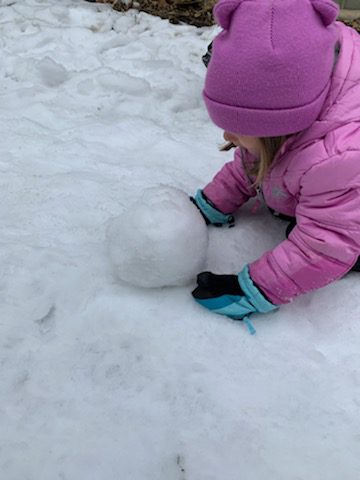
"You start out like this," Nina explains as she packs together a small pile of snow. ”You push it and roll it, and it gets bigger and bigger. Then you have to pack it down. But not too hard. If you pack too hard, it falls apart."
The winter months offer endless opportunities to introduce children to the science behind the season as you explore and discuss changes in sunlight, weather, and temperature. You can pack a lot of learning and vocabulary into your day by simply allowing your children to engage in outdoor winter play.
“We need three balls!" yells Hudson. "One for the snowman's head, one for the middle, and one for the bottom!” Hudson has assumed the role of lead architect during this day of snowman construction.
“We need three sizes," Jameson pipes in. "Big, bigger, and even bigger!”
“Yes, and the biggest is at the bottom,” notes Nina.
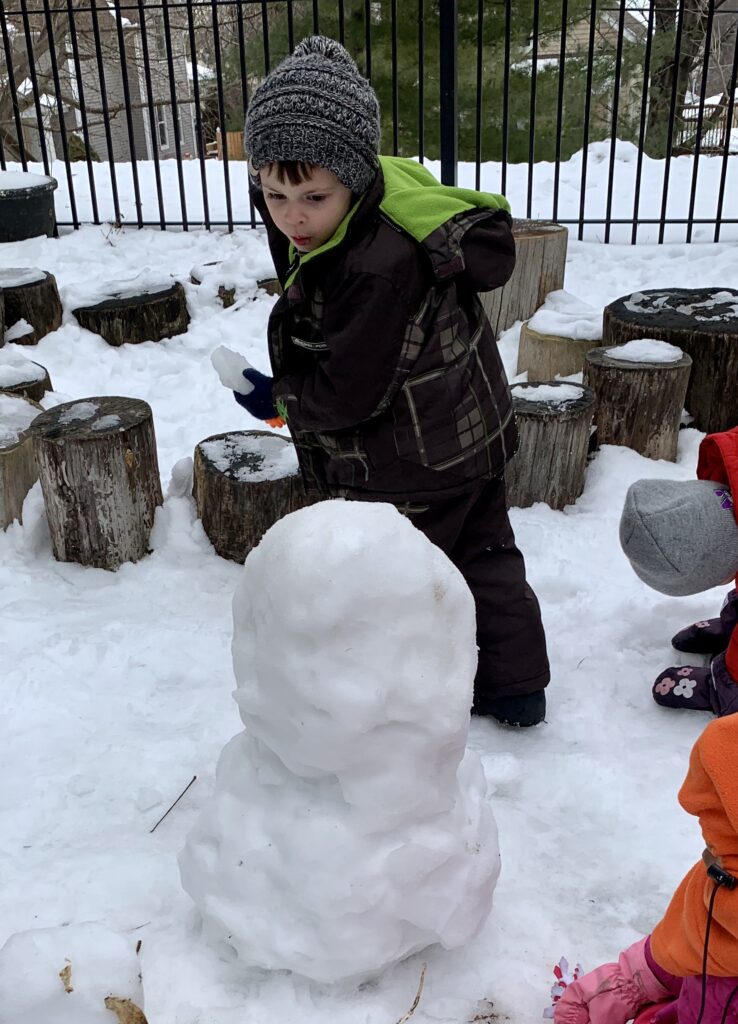
As I observe and listen in, I seize various opportunities to introduce some new vocabulary into our play. We discuss cause and effect, friction, and experiments.
I don't expect these words to start flowing off of the children's lips any time soon, but I never miss an opportunity to plant the seeds of knowledge in their developing brains.
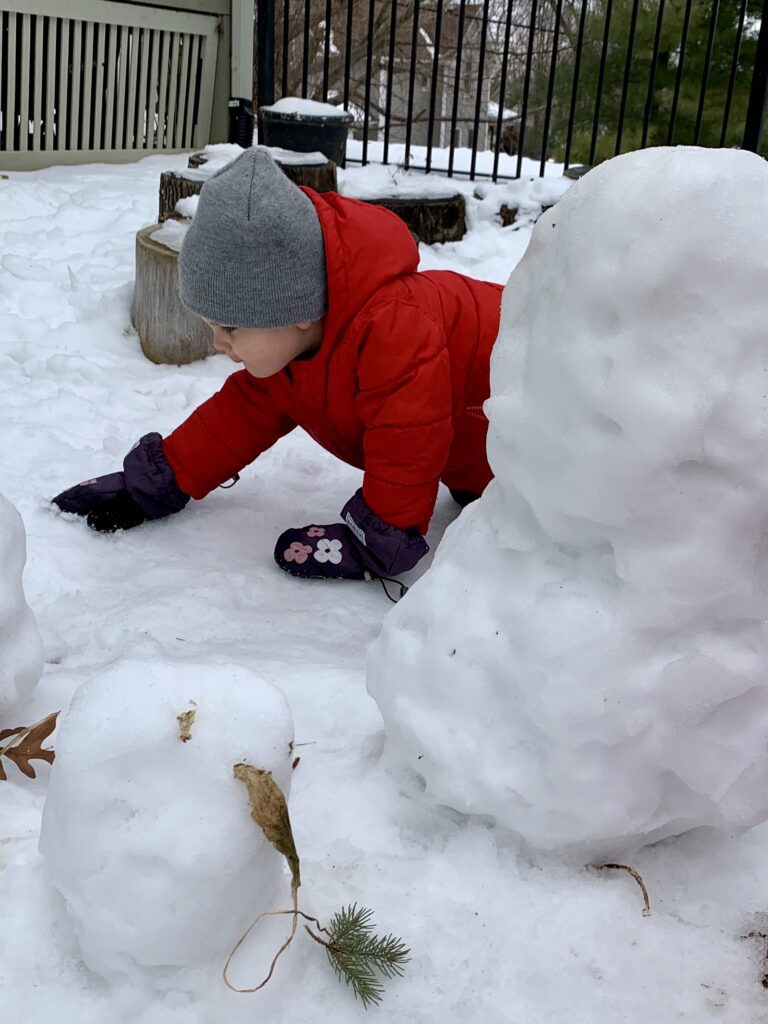
“Mine looks too square,” Jameson announces to no one in particular.
“If you rub it here just a little and chop this side a little bit, you will make it into a ball,” advises Avery, who is a year older and a bit more experienced in snowman construction.
I watch as the children shape the snow into balls of different sizes. I hear vocabulary words such as "bigger," "taller," and "heavier" as the older children compare the different snowball sizes and help me stack them one on top of the other to form snow people.
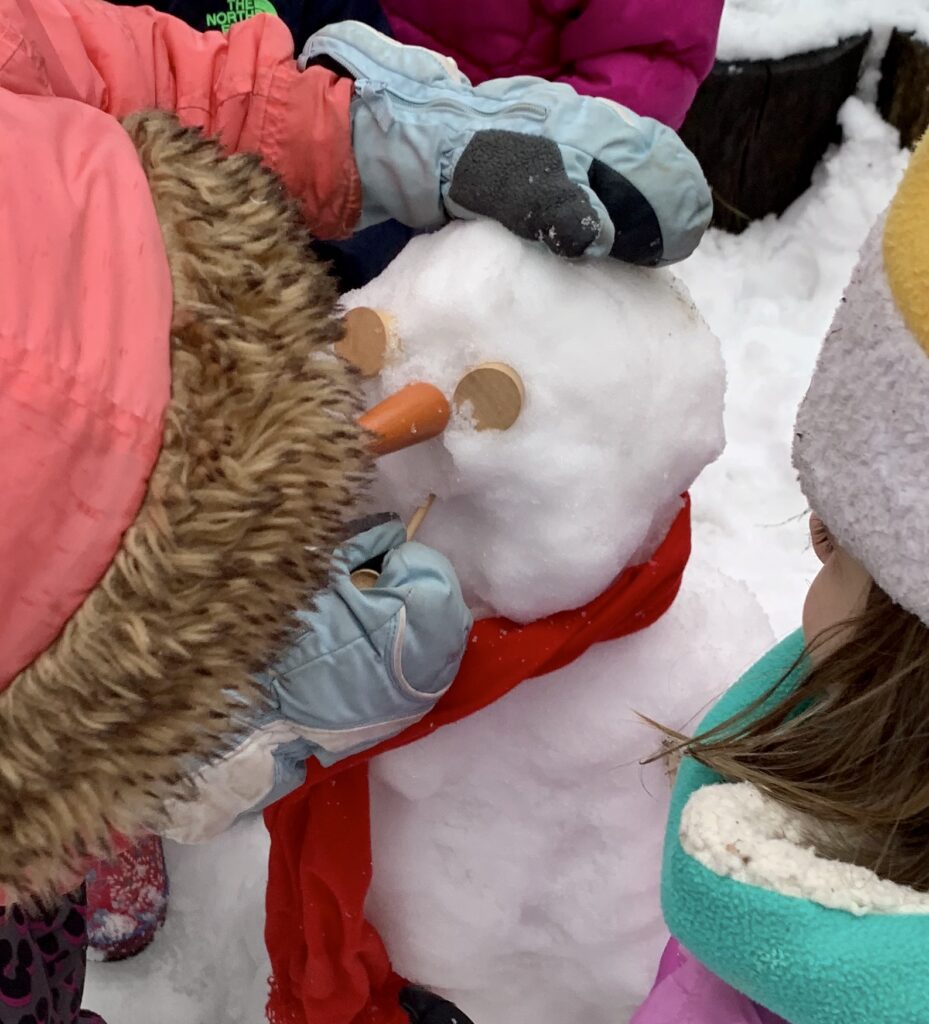
"We need two eyes and a carrot nose and buttons for the snowman's mouth," the children shout. "We need two branches for his arms and he needs a hat and a scarf!"
For years, the needs of my little "snow sculptors" left me scrambling for the items that they needed to sculpt and accessorize their snow people. After three decades of coming up short, I ordered a snowman kit like the one below (click anywhere on the image to find this kit on Amazon):
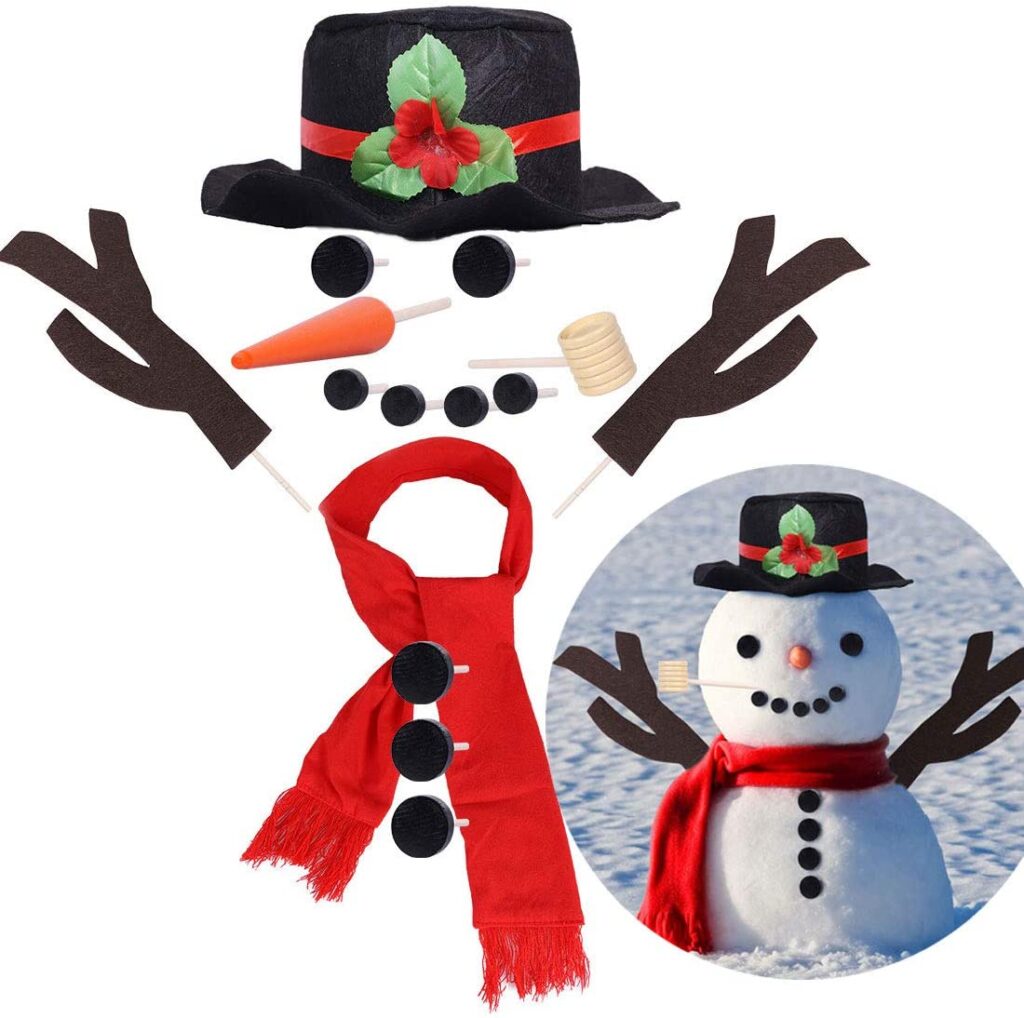
You don't need a ready-made snowman kit like this one, but I strongly suggest that you put together all of the materials that your children will need to build a snowman and keep them in a bag or a plastic bin for winters to come.
What a game changer! Whether you assemble your own snowman kit or purchase a pre-assembled kit, you'll find that it provides ample opportunities for STEM (and STEAM) learning.
Whenever I pull this kit out, the excitement level rises and the children's design process becomes more focused and deliberate.
As the children build their snowmen, I see patterns, sequencing, and spatial reasoning. I hear math vocabulary. I also see teamwork, which is such a gift in any learning adventure. When children work together on a project, it fosters the development of confidence and camaraderie—and these collaborative endeavors culminate in a sense of accomplishment for all.
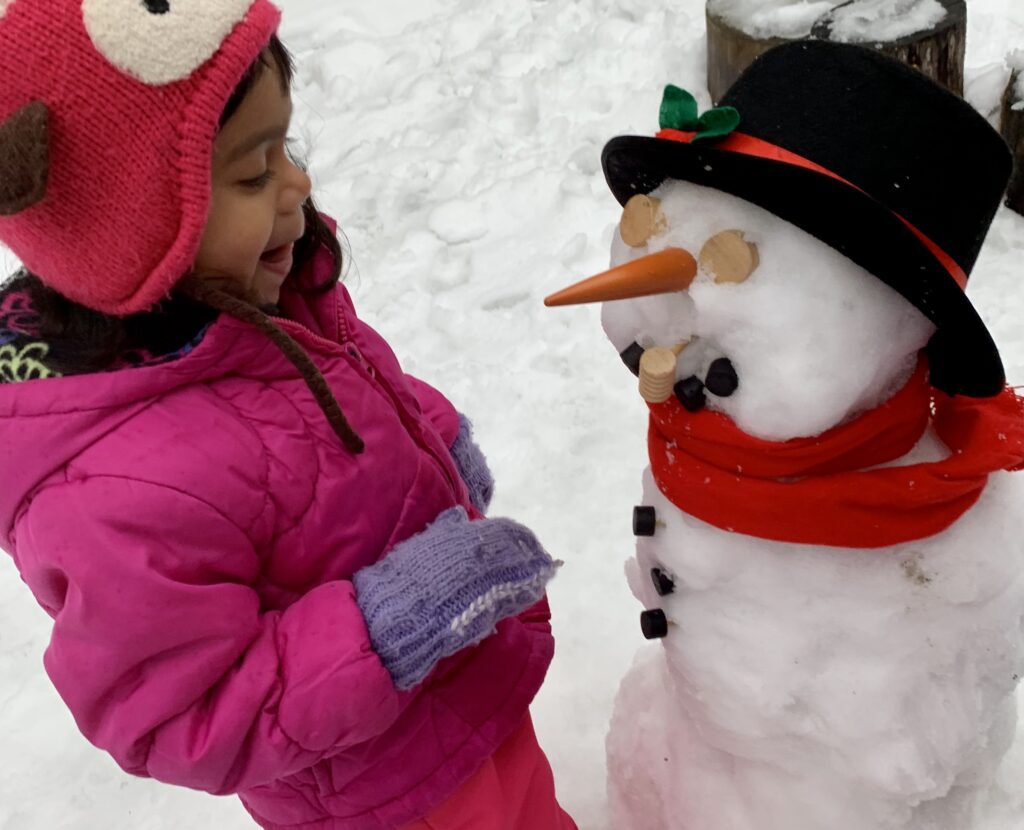
It's going to be a long winter, so bundle up and get some fresh air. It's good for the body, the brain, and the spirit!
Have fun!